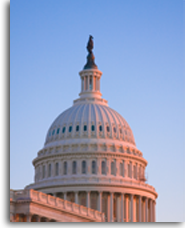This item by J.P. Green was first published on July 28, 2009.
Count me in as one of the more pro-Obama bloggers. I am generally pleased by the leadership he has provided to far, although I still sometimes have difficulty getting my head around the concept of being proud of a president — it’s been a long time. Yes I admire his speeches, but I also admire President Obama’s low-key, no drama leadership style, which is a good way to get things done — most of the time.
With respect to health care, however, there is something that should be said, and Frameshop‘s editor-in-chief, Jeffrey Feldman says it exceptionally well in his article “On Health Care, Obama Needs More Drama“:
Given the widespread fear that has spread throughout the national healthcare debate, I was surprised by the virtual absence of emotion in President Obama’s press conference performance…As a candidate, his speeches about “change” were so powerful that they spawned a pop culture industry. And yet, now that he is President and talking healthcare “change”–a national policy that will end the daily suffering and humiliation of tens of millions of Americans–Obama’s rhetorical passion has been displaced by the soporific drone of a mid-grade federal accountant. Where is the passion, Mr. President?
Feldman quotes a ho-hum passage from the President’s press conference, and adds “Obama’s words seemed to be governed by the logic of balance sheets rather than the emotion of lives in the balance.” Feldman may be overstating the President’s lack of discernable passion about health care reform, but he has a point. The balance sheet stuff is important — Americans want to know that proposed reforms are fiscally sound, and they are not going to get screwed by higher taxes. But it is up to the President, more than anyone, to arouse the citizenry’s anger at the gross injustice of the current “system.” Voters should be reminded of the urgency of heath care reform as a life or death issue for many Americans, because it is. With that accomplished, Feldman argues, then the President can shine the light on his fiscal prudence. Feldman adds,
OK, sure…The cost of inaction is greater than the cost of action, true. I agree. But healthcare reform is also about: the infuriating inhumanity of the current system…!
People are living lives in fear–children are dying, for goodness sakes. This is about injustice and the anger that tens of millions of people have been trapped in lives of fear as a result of health insurance business model that Congress has been too cowardly to confront for decades. And this is about the very real, very legitimate fears that people have as a result of thinking about the social and cultural shift that will result from having a public healthcare system that did not exist before…These are legitimate fears, and people are talking passionately about them all over the country.
Feldman calls for corrective action:
Obama’s single greatest strength as a politician has been his ability to speak in such a way that it makes Americans feel that we are soaring to new heights together…Franklin Roosevelt had that gift. John Kennedy had that gift. And Barack Obama has that gift, too. And needs to use it.
It’s going to take every bit of leverage the President can muster to get a decent health care bill enacted, and Feldman is right that the President’s remarkable ability to arouse and inspire is a weapon that should be unsheathed before it’s too late.



